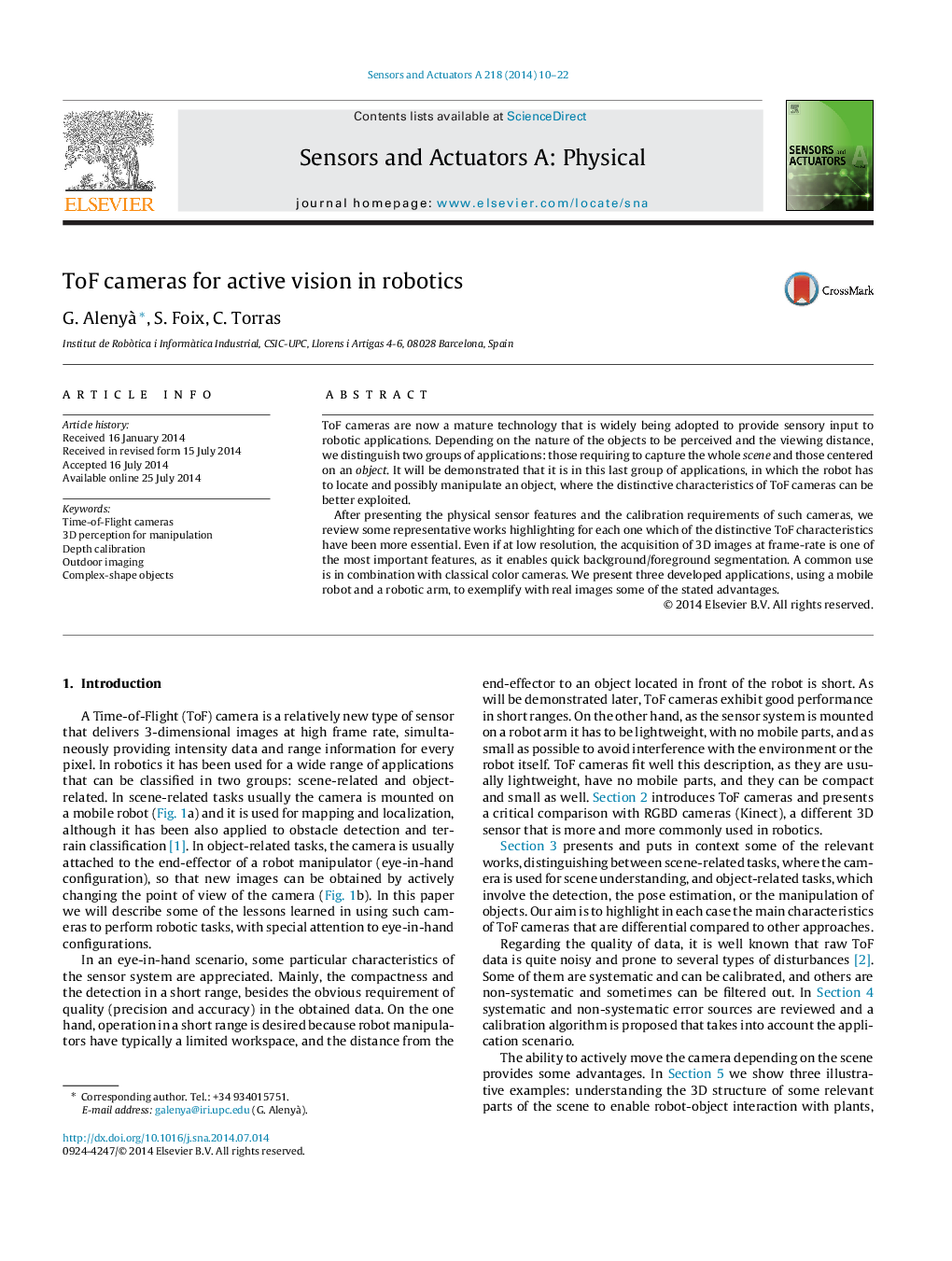| کد مقاله | کد نشریه | سال انتشار | مقاله انگلیسی | نسخه تمام متن |
|---|---|---|---|---|
| 736969 | 1461882 | 2014 | 13 صفحه PDF | دانلود رایگان |

• Time-of-Flight cameras are presented and common acquisition errors are described.
• A calibration method is suggested, for depth values and for coloring 3D points.
• Review of TOF cameras for robot manipulation tasks compared to other alternatives.
• The particularities of eye-in-hand configuration are presented.
• ToF camera usefulness is shown through experiments in 3 eye-in-hand applications.
ToF cameras are now a mature technology that is widely being adopted to provide sensory input to robotic applications. Depending on the nature of the objects to be perceived and the viewing distance, we distinguish two groups of applications: those requiring to capture the whole scene and those centered on an object. It will be demonstrated that it is in this last group of applications, in which the robot has to locate and possibly manipulate an object, where the distinctive characteristics of ToF cameras can be better exploited.After presenting the physical sensor features and the calibration requirements of such cameras, we review some representative works highlighting for each one which of the distinctive ToF characteristics have been more essential. Even if at low resolution, the acquisition of 3D images at frame-rate is one of the most important features, as it enables quick background/foreground segmentation. A common use is in combination with classical color cameras. We present three developed applications, using a mobile robot and a robotic arm, to exemplify with real images some of the stated advantages.
Journal: Sensors and Actuators A: Physical - Volume 218, 1 October 2014, Pages 10–22